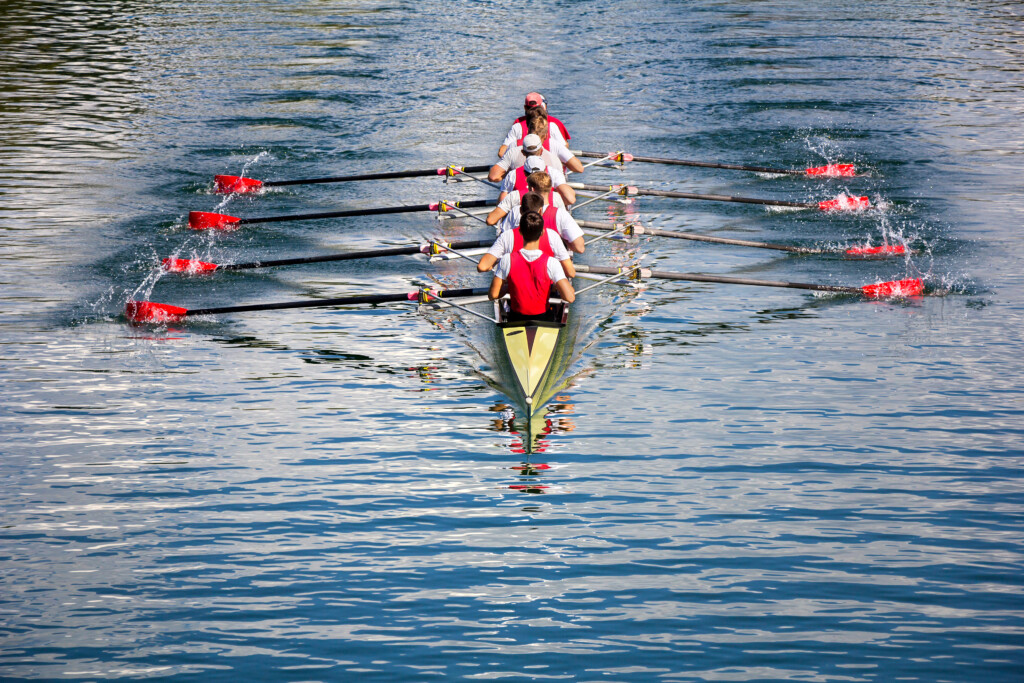Environment
Explore how environmental factors like weather, air quality, and climate change influence sports and physical activity. Our resources provide insights on adapting to extreme temperatures, managing air pollution, and ensuring safety in varying environmental conditions.
Search Environment Resources
Top 10 resources
- Understanding Air Quality: A Guiding Document for Sport Organizations
- Air Quality and Outdoor Sport Safety Training Module
- How to use the Air Quality Health Index
- Air Quality and Outdoor Sport Safety: A Policy Guide for Canadian Sport Organizations
- Clearing the Air Around the AQHI Infographic
- Air Pollution and Sport Safety Infographic
- Personal strategies to mitigate the effects of air pollution exposure during sport and exercise
- Cooling Strategies to Improve Performance in the Heat
- Heat Illness in Sport and Exercise Literature Review
- The Impact of Shorter Winters on Canadian Sport

Featured resource

Featured resource
Oliver Scholfield

Featured resource
Michael D. Kennedy

Featured resource
SIRC with Health Canada
Quick Facts
What precautions should you take when exercising in extreme cold?
Dressing in layers, protecting exposed skin, and limiting intense outdoor activities during extreme cold may help to prevent frostbite and hypothermia. Wearing moisture-wicking base layers, insulating middle layers, and windproof outer layers can help regulate body temperature and protect against cold-related injuries. Additionally, warming up properly before exercise, staying hydrated, and taking frequent breaks in sheltered areas can further reduce the risk of cold-related health issues.
What precautions can you take when exercising in extreme heat?
Stay hydrated, wear light and breathable clothing, and avoid exercising during peak heat hours to prevent heat-related illnesses. It’s important to gradually acclimate to high temperatures, take frequent breaks in shaded or cool areas, and monitor for signs of heat exhaustion, such as dizziness or nausea. Using cooling strategies, such as ice packs or cool baths, and adjusting exercise intensity can also help mitigate the risks associated with extreme heat.
What precautions should you take during lightning storms while participating in outdoor sports?
When lightning is spotted or thunder is heard, immediately stop outdoor sports activities and seek shelter in a sturdy building or a vehicle. Avoid open fields, hilltops, tall trees, and metal structures, as they attract lightning. Stay sheltered for at least 30 minutes after the last sound of thunder before resuming outdoor activities. It’s also recommended to have a lightning safety plan in place for organized events, ensuring all participants are aware of what to do.
Why are outdoor sport participants at greater risk of heat illness and what are the warning signs?
Sport participants are at risk of heat illness because physical activity raises the body’s core temperature, and in hot conditions, the body’s ability to cool itself through sweating is compromised. Factors like direct sunlight, hot surfaces, and protective gear can exacerbate this risk by further hindering the body’s cooling process.
Signs of heat-related illnesses include:
- Dizziness and headaches
- Excessive sweating
- Nausea
- Cramps
- Confusion
It’s important to monitor these symptoms and take immediate action, such as moving to a cooler environment, hydrating, and seeking medical attention, if necessary, to prevent serious health complications.
How does poor air quality affect athletic performance?
Poor air quality can reduce lung function, increase respiratory symptoms, and decrease overall athletic performance, especially during high-intensity activities. Pollutants such as particulate matter and ozone can irritate the airways and impair oxygen delivery to muscles, leading to decreased endurance and higher perceived exertion. Athletes may also experience more frequent coughing, wheezing, and shortness of breath, which can further hinder their ability to perform optimally.
Tips to reduce exposure to air pollution:
- Monitor local air quality alerts and follow public health advice regarding the safety of outdoor exercise
- Schedule outdoor practices and games early in the morning or later in the evening to avoid exercising during rush hour traffic
- Choose outdoor practice and game locations away from major roadways to avoid traffic emissions
- When air quality is poor, postpone outdoor sports activities or, if possible, carry out the activity indoor
Why is it important to check the Air Quality Health Index (AQHI) before outdoor physical activity and sports participation?
The AQHI provides real-time information on air pollution levels, helping athletes and coaches make informed decisions about training or competing outdoors. By checking the AQHI, you can assess whether the air quality is within a safe range or if it poses potential health risks. This proactive approach allows for adjustments in training schedules or locations, helping to protect athletes from the adverse effects of poor air quality and maintain their performance and well-being.
How can climate change impact sports and physical activity?
Climate change can lead to more frequent extreme weather events, altered seasons, and increased health risks, all of which can affect the safety and accessibility of sports activities. For example, rising temperatures and heatwaves can lead to a higher risk of heat-related illnesses, while increased precipitation and flooding may disrupt outdoor events and training. Additionally, changing weather patterns can impact field conditions, making certain sports less accessible or safe.
Video Resources
8A: Leveraging Sport Events for Sustainable Outcomes
- Western University and SIRC
- 2022
Why sport organizations need an air quality policy
- Field Hockey Canada, Field Hockey Ontario, and SIRC
- 2022
9A – Sport, Development and Environmental Sustainability
- University of Toronto, Brock University, University of Western Ontario, and SIRC
- 2022
Using the Air Quality Index to make decisions about outdoor sport safety
- SIRC
- 2022
Why clean air should be a priority in your sport, and why it’s a team effort
- Loughborough University and SIRC
- 2022
How air pollution affects human health and sport performance
- Loughborough University and SIRC
- 2022
Knowledge Nuggets
knowledge nuggets
Empowering athlete advocacy for climate action
Athletes in winter sports recognize climate change impacts but often engage in low-risk advocacy actions. Their concerns include inadequate climate knowledge, fear of public perception,
Athletes in winter sports recognize climate change impacts but often engage in low-risk advocacy actions. Their concerns include inadequate climate knowledge, fear of public perception, and feeling powerless within sports structures. Research shows empowering scholarly activism and building athlete communities may encourage stronger climate action within sports, challenging industry norms for sustainability.
knowledge nuggets
Reducing waste at sporting events
As the demand for greener practices in sports events grows, new solutions are emerging to tackle environmental challenges. This innovative approach boosts recycling, slashes landfill
As the demand for greener practices in sports events grows, new solutions are emerging to tackle environmental challenges. This innovative approach boosts recycling, slashes landfill waste, and proves that major sports events can be both eco-friendly and cost-effective.
knowledge nuggets
Climate change impacts on outdoor activities in the summer
Much of summer tourism heavily relies on outdoor activities like hiking and water sports. Climate change could affect these activities, calling for adaptation measures such
Much of summer tourism heavily relies on outdoor activities like hiking and water sports. Climate change could affect these activities, calling for adaptation measures such as improving natural conditions, upgrading infrastructure, and enhancing equipment.
knowledge nuggets
Regular physical activity and rising temperatures
Regular physical activity across the lifespan could allow people to better tolerate rising temperatures. Research shows that regular physical activity in hot conditions can increase
Regular physical activity across the lifespan could allow people to better tolerate rising temperatures. Research shows that regular physical activity in hot conditions can increase one’s heat tolerance and can help the body deal with stress placed on the cardiovascular system during hot temperatures. Physical activity can also help people cope with the stresses associated with extreme heat events.
knowledge nuggets
Health risks of climate change to athletes
Climate change poses complex risks to the environment, society, and health, but its impact on sports has been underexplored. Take a look at this new
Climate change poses complex risks to the environment, society, and health, but its impact on sports has been underexplored. Take a look at this new model that outlines the health risks climate change poses to athletes, including direct threats from extreme weather and indirect effects like increased air pollution and infection risks.
knowledge nuggets
Reviewing the impact of climate change on sports
As climate change increasingly affects our world, its impact on sports operations is becoming more evident. This review explores how climate shifts are influencing organized
As climate change increasingly affects our world, its impact on sports operations is becoming more evident. This review explores how climate shifts are influencing organized competitive sports, from athlete health and performance in the heat to cities’ suitability for hosting events.
knowledge nuggets
Sport performance in cold weather
Cold weather can impact sports performance, making specific guidelines for competing in cold conditions necessary. This review offers insights on how cold affects the body
Cold weather can impact sports performance, making specific guidelines for competing in cold conditions necessary. This review offers insights on how cold affects the body and provides tips for athletes and coaches to stay healthy and perform well in winter sports.
knowledge nuggets
Scoring for the planet
Football clubs are making significant strides for the planet through innovative initiatives like Pledgeball, which harnesses the collective energy of fans to tackle climate change
Football clubs are making significant strides for the planet through innovative initiatives like Pledgeball, which harnesses the collective energy of fans to tackle climate change head-on. An examination of this campaign within a European football club revealed that by strategically aligning climate initiatives with fan identities and leveraging the sport’s distinctive culture, clubs effectively empowered supporters to make environmentally conscious pledges and behaviour changes.
More climate resources
|
|
|
|
|
|
|
|
|
|
|
|
|
|
